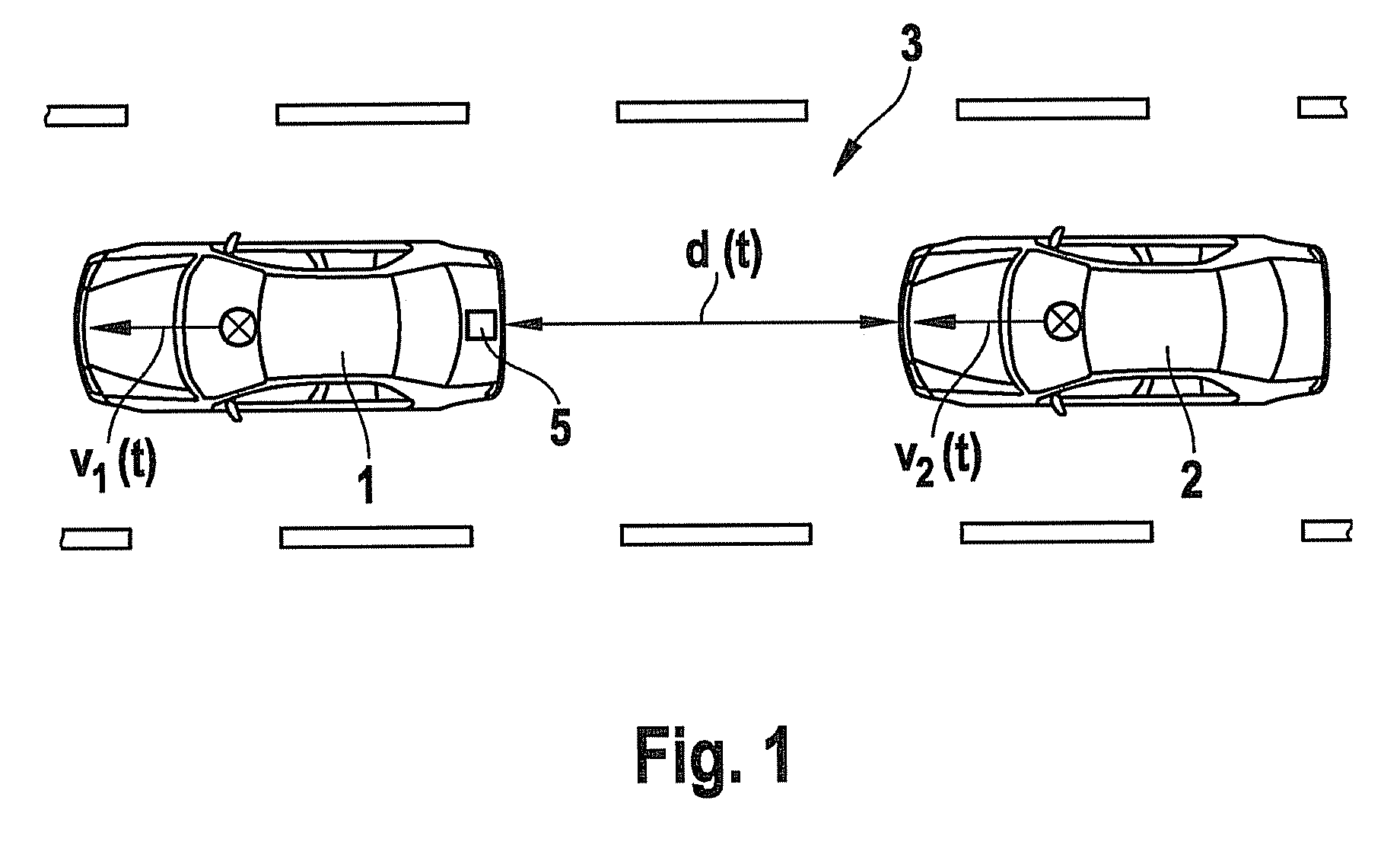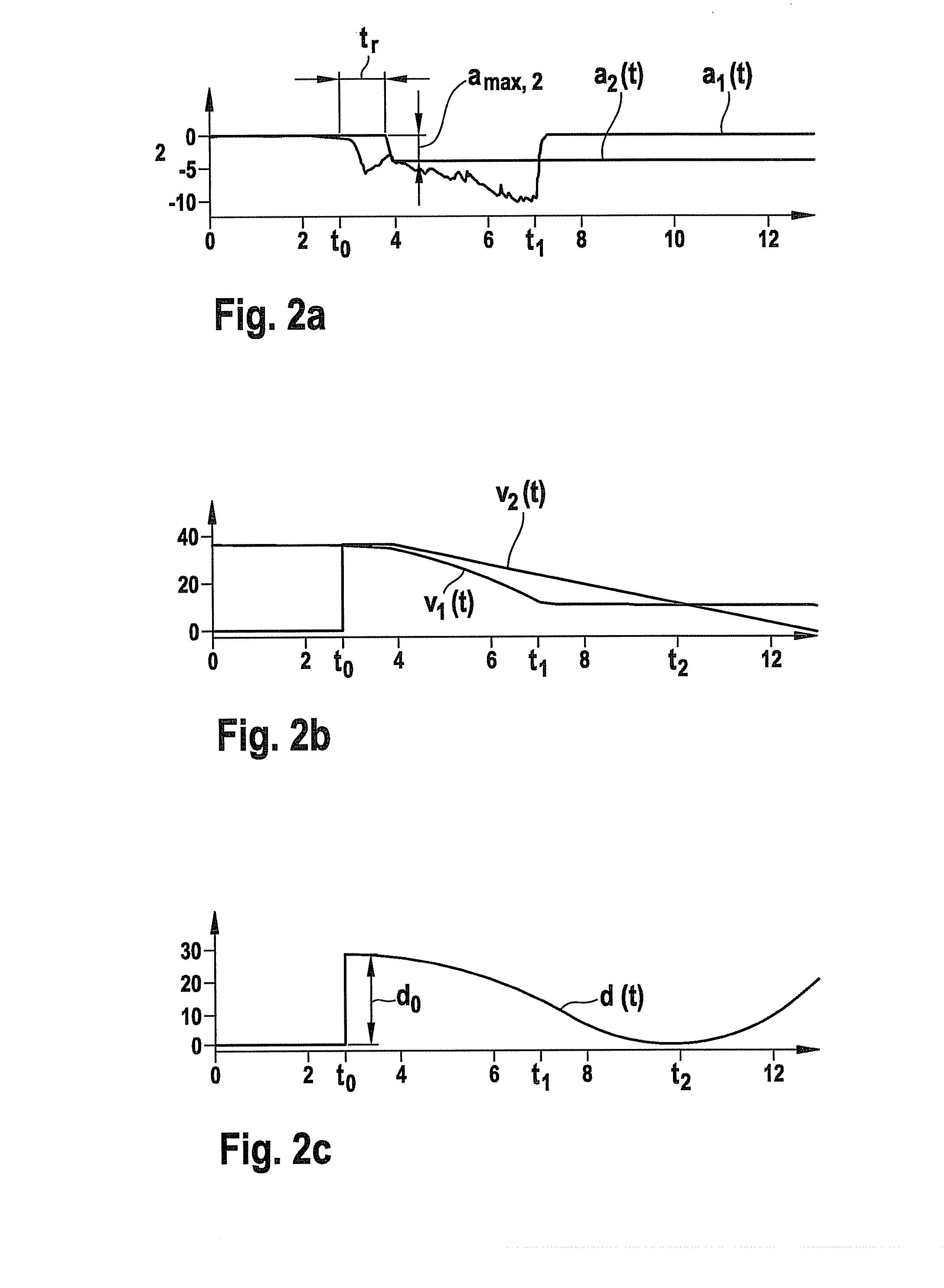Prevention of a rear crash during an automatic braking intervention by a vehicle safety system
a technology of automatic braking and rear crash prevention, which is applied in the direction of braking systems, instruments, analogue processes for specific applications, etc., can solve problems such as rear crash, and achieve the effect of reducing the danger of rear crash
- Summary
- Abstract
- Description
- Claims
- Application Information
AI Technical Summary
Benefits of technology
Problems solved by technology
Method used
Image
Examples
Embodiment Construction
[0017]FIG. 1 shows two vehicles 1, 2 that are moving on a roadway 3 with a speed v1(t) or v2(t) respectively. The distance between the two vehicles is designated d(t).
[0018]At least front vehicle 1 has a vehicle safety system 5 that is capable of introducing an automatic emergency braking in certain driving situations, e.g. when there is the threat of a frontal collision, or after an initial collision. The overall system, including the sensors and the control device, is here represented schematically as block 5.
[0019]Upon recognition of a critical situation, an automatic braking is activated, and the vehicle brakes are at first actuated with a high braking force. Beginning from a particular point in time, the brakes are then at least partially released in order to reduce the danger or severity of a threatening rear crash. The point in time at which the brakes are released is calculated using a theoretical model for the approach of a hypothetical vehicle following behind, based on as...
PUM
 Login to View More
Login to View More Abstract
Description
Claims
Application Information
 Login to View More
Login to View More - R&D
- Intellectual Property
- Life Sciences
- Materials
- Tech Scout
- Unparalleled Data Quality
- Higher Quality Content
- 60% Fewer Hallucinations
Browse by: Latest US Patents, China's latest patents, Technical Efficacy Thesaurus, Application Domain, Technology Topic, Popular Technical Reports.
© 2025 PatSnap. All rights reserved.Legal|Privacy policy|Modern Slavery Act Transparency Statement|Sitemap|About US| Contact US: help@patsnap.com



